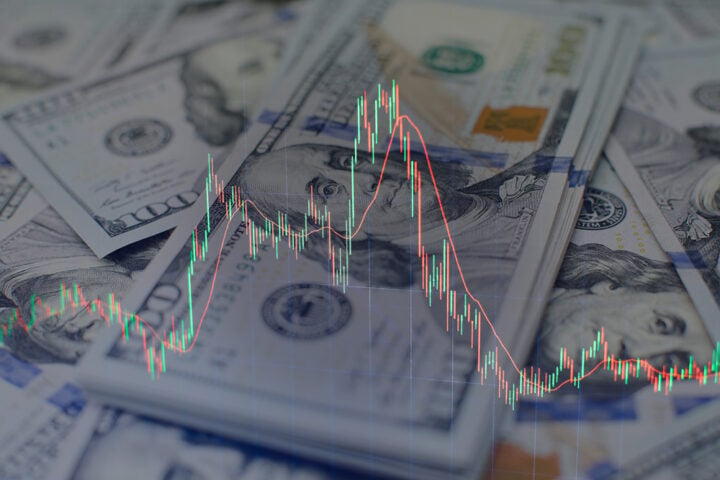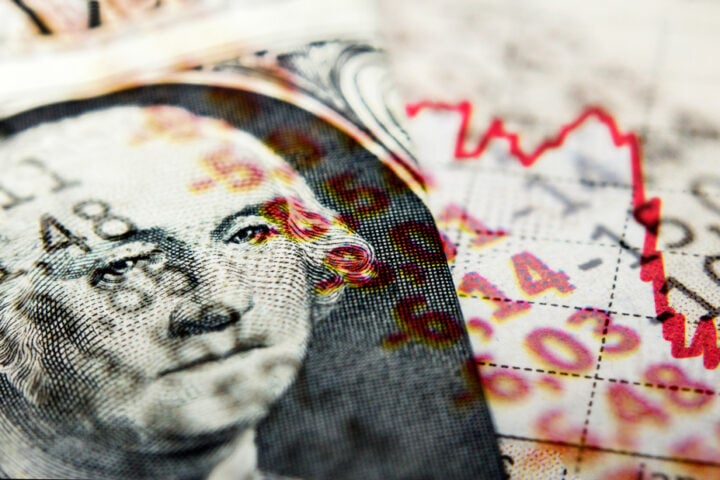Gold prices fell for a sixth straight session on Wednesday, pressured by a strengthening U.S. dollar and fading hopes for a substantial Federal Reserve rate cut in November. Investors are turning their attention to the Federal Reserve’s September meeting minutes, scheduled for release at 1800 GMT, which may provide key insights into the central bank’s next moves. As market participants adjust their expectations, the precious metal continues to struggle in the face of a robust dollar.
Dollar Strength Pushes Gold Lower
By mid-morning on Wednesday, spot gold slipped 0.2% to $2,615.83 per ounce, while U.S. gold futures for December delivery remained steady at $2,634.40. Meanwhile, the dollar index surged to its highest level in nearly two months, making gold more costly for international buyers and adding to the downward pressure on prices.
Phillip Streible, chief market strategist at Blue Line Futures, commented on the situation: “The dollar index continues to firm up, and economic data is more supportive for a 25 basis point cut.” He noted that if the Fed’s minutes reveal a dovish stance, suggesting the need for more aggressive rate cuts, it could offer support for gold, potentially lifting prices toward $2,650.
Fed Minutes: A Potential Turning Point?
The release of the Federal Reserve’s September meeting minutes is eagerly awaited by traders seeking clarity on the central bank’s stance on interest rates. Last week’s strong U.S. jobs report has solidified expectations for a modest 25-basis-point rate cut in November, with market participants now assigning an 84% chance to such a move, according to the CME FedWatch tool. The prospects of a larger, 50-basis-point cut appear increasingly unlikely.
However, if the minutes suggest a greater urgency for the Fed to ease rates more aggressively, it could help reverse the recent downward trend in gold prices. Additionally, upcoming U.S. inflation data, including the Consumer Price Index (CPI) and Producer Price Index (PPI), could further shape market expectations and impact the precious metal’s performance.
How Interest Rates and the Dollar Influence Gold
Gold typically benefits in a low-interest-rate environment, as reduced rates lower the opportunity cost of holding non-yielding assets like bullion. The recent decline in gold prices highlights investors’ tempered expectations for aggressive rate cuts in the near term, while the stronger dollar has made it harder for gold to retain its value.
Despite recent headwinds, some market analysts remain optimistic about gold’s prospects in the long run. “Despite the modest pull-back, expectations of lower interest rates and ongoing geopolitical tensions suggest the backdrop for gold is likely to remain supportive over the long term,” said Carlo Alberto De Casa, a market analyst at Kinesis Money. His perspective underscores a belief that while short-term pressures are affecting gold, underlying economic factors could still support a bullish outlook.
Factors That Could Boost Gold Prices
For gold to regain its upward momentum, signals of a more dovish approach from the Federal Reserve could play a critical role. Should the central bank indicate a readiness to implement further rate cuts to support the economy, gold prices could see a rebound. Additionally, upcoming inflation data could sway market sentiment; if signs of easing inflation emerge, it may strengthen the case for additional rate reductions.
Geopolitical uncertainties could also provide support for gold, as investors often turn to safe-haven assets during times of global instability. Persistent concerns, ranging from trade tensions to geopolitical conflicts, continue to create an environment where gold remains an attractive option for risk-averse investors.
Gold’s recent slide reflects a mix of a stronger dollar and tempered expectations for significant Federal Reserve rate cuts. While the release of the Fed’s September meeting minutes may shed light on the central bank’s direction, the market remains cautious as it awaits further economic data. Despite the recent losses, the long-term outlook for gold could still be supported by factors like potential interest rate cuts and ongoing geopolitical uncertainties, suggesting the precious metal may find firmer footing as conditions evolve.







